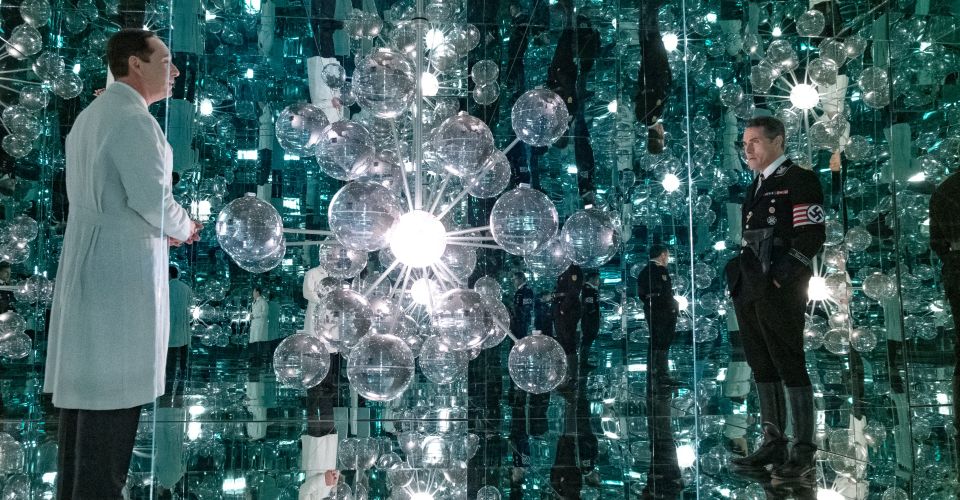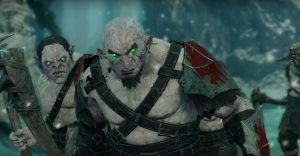The Man In The High Castle Season 4 Review: Nazis Try To Ruin The Multiverse

As villains go, Nazis are reliable baddies. Everyone can agree they represent the worst humanity has to offer. And for three seasons, Amazon’s alt-history drama The Man in the High Castle has been running increasingly wild with that idea, as the evil of fascism threatens not only the alternate world in which the story takes place, but now the multiverse as well. As high concepts for television series (and, of course, the novel by Philip K. Dick) go, it’s pretty high, but despite some rough going in the second season, the series has managed to settle things down and set the stage for a dramatic — if slightly convoluted — series finale, fully embracing the narrative’s sci-fi underpinnings, no matter how outlandish they may eventually become.
With season 3, the series took significant steps to embrace a more full-fledged science fiction angle, not only confirming the existence of alternate dimensions, each with their own history and differing outcome from World War II, but to allow its primary characters to move freely among them. There’s some difference in that regard, to be sure, as Juliana Crain (Alexa Davalos) reveals she’s able to do so without the aid of fancy gizmos and inter-dimensional gateways, while the Nazi regime, headed up by Obergruppenführer John Smith (Rufus Sewell), makes use of those advanced technologies to try and ruin the multiverse as a whole.
The shift in the series’ priorities has been ongoing ever since series creator Frank Spotnitz was let go midway through production on season 2. With that second season becoming a fairly aimless mess, the series regrouped and reorganized, delivering a more propulsive and entertaining third season, one that not only delivered the multiverse and the stage for massive, multi-dimensional revolution in season 4, but also saw the deaths of a number of significant characters, including Joe Blake (Luke Kleintank), Frank Frink (Rupert Evans), and Nobusuke Tagomi (Cary-Hiroyuki Tagawa), among others.

The culling of cast members is a sure sign the end is nigh, and evidence of just how far beyond the source material Amazon’s series has gone. It’s also an effective way to collect the many narrative threads and to streamline the expansive overarching plot, making it more manageable for the series’ writers as they push toward the finale. The more simplified structure — in terms of character count, anyway — also works in the audience’s favor, as there’re fewer arcs to track, and any new additions to the season play a more integral role in the inevitable climax.
To that end, though, The Man in the High Castle is largely fixated on the occasionally intersecting — by way of alternate dimensions — stories of Juliana Crane and John Smith. This approach is easy to understand as Juliana and John most clearly represent both sides of the conflict and have consistently been at the center of the series’ most reliably compelling story arcs. It also doesn’t hurt that Juliana was discovered to be something of an anomaly, having jumped into another reality, where the Axis powers lost WWII, when John attempted to execute her at the end of season 3.
There are still a number of supporting players in the mix, primarily Jason O’Mara’s Wyatt Price, who is leading what’s left of the rebellion in the neutral zone against Nazi encroachment. Price is also involved in an effort to align his forces with a group of African American fighters who have organized in San Francisco. These intersecting threads provide ample reason for Inspector Kido (Joel de la Fuente) and Robert Childan (Brennan Brown) to play a role. It also offers a meaty storyline for what’s left of the Smith family after John’s wife Helen (Chelah Horsdal) and daughters hightailed it to the neutral zone when his son was killed by the Reich.

The Man in the High Castle has had pacing issues from the moment go. This has not only resulted in some ponderous hours of television, but also the sense that the series has outstripped its narrative goals on more than one occasion. Those issues persist here, too. The first two episodes are slow to the point of distraction, with the series jumping back and forth between moments of expository dialogue. While these circumstances provide context for what’s at stake, many interactions, like John dealign with his daughters, come across as a bit too facile to be as meaningful as the show intends. Similarly, Juliana’s continued involvement with an alternate reality John Smith plays up the “what if?” scenario on which the series is based, but it takes far too long for anything she discovers to have an impact on the story overall.
Though it’s questionable whether the circuitous journey makes the destination worthwhile, The Man in the High Castle nevertheless builds toward a fascinating finale. The series might have been better served with a shorter, more focused final season, but those who’ve stuck with the series from the beginning will likely be satisfied with what one of Amazon’s first major original series has planned for its swan song.
The Man in the High Castle season 4 will be available to stream on Amazon Prime Video on Friday, November 15.
About The Author


















